The Best 5th Wheel Hitch for Heavy-Duty Towing

If you've been eyeballing those big tow numbers on modern pickups, there's something you should know: Most of them are not rated using a traditional under-bumper hitch. Instead, they're rated using a 5th-wheel hitch. The tractor-trailer style kingpin and horseshoe hitch head take weight from the trailer, and put it over the middle of your tow vehicle, right over the rear axle. This eliminates one of the major causes of trailer sway and jackknifing: Too much weight on a trailer hitch.
A 5th wheel hitch also shortens the overall length of your tow rig dramatically and makes it more maneuverable. You can easily take six feet or more off the total length of truck and trailer, and moving the pivot point ahead of your pickup’s back wheels allows you to make tighter turns. Upgrading to the best 5th wheel hitch is a big step up from wheel towing with a trailer hitch and ball, one we think you'd appreciate (see our Table of Contents for more).
Disadvantages of a 5th wheel hitch
But there are a lot of reasons why everyone doesn’t use a fifth wheel hitch for towing. Most people choose to dedicate a heavy-duty tow vehicle to full-time towing duty, and they may have more weight capacity than you need—they’re beyond the Class V category, capable of pulling up to 30,000 pounds with more than three tons of tongue weight. Unless you have a factory (or aftermarket) puck system installed, you’ll have semipermanent base rails installed, and a heavy hitch bolted onto that. When installed, they take up a lot of the space in the bed of your truck, and of these hitches are too big, heavy, and greasy for one person to remove. Even for two.
However, for serious RVers there’s no substitute for the benefits of a 5th wheel rig to improve the towing experience. We talked to experts, and combed through user reviews and forums, to find the best 5th wheel hitches on the market today. All of the hitches we recommend are available in different configurations for different weights, puck systems, and other needs, so if you see a set of features you like, you can probably find that model for your truck or towing requirements.
Table of contents
- 1. Editor's Pick for Ford Puck System: B&W Trailer Hitches 25K Companion
- 2. Best Non-Slider for Existing Base Rails: CURT 16245 Q24 5th Wheel Hitch
- 3. Best Automatic Sliding 5th Wheel Hitch: Demco 8550034 Autoslide 18K Above-Bed Mount
- 4. Best Slider for Ram Puck System: PullRite SuperGlide 2315 24K
- 5. PullRite 4500 OE Puck Series 2
- 6. Best Bargain: Reese Pro Series 20K Fifth Wheel Hitch
- 7. Best Gooseneck Adaptor: Andersen Hitches Ultimate 5th Wheel Connection
- What is a Puck System?
- What is the Difference Between a 5th Wheel and a Gooseneck Hitch?
- How Much Weight can a 5th Wheel Hitch Handle?
- Maneuvering With a 5th Wheel Camper
- Do I Need a Slider Hitch?
- 5th Wheel Hitch Maintenance
- Tips for Hooking Up and Unhooking
- How to Hook Up A 5th Wheel Hitch
- How To Unhook a 5th Wheel Hitch
- Q & A
1. Editor's Pick for Ford Puck System: B&W Trailer Hitches 25K Companion
If you want one of the beefiest non-slider hitches for the most popular line of trucks, your search starts with a B&W Companion 5th wheel hitch. The Companion line is available for Ford, Ram, and late-model GMC, but the USA-made 25K Ford Companion stands out among forum users—and Amazon buyers, where it has a 96% positive rating, one of the highest we've seen for any aftermarket product, period.
The B&W Companion is a two-part design, with a heavy base plate that should drop into factory Ford pucks that come mounted in the bed. It then clamps into place with pinned handles—no bolting is required. The thick one-inch dual jaws have a cam design that increases leverage both for locking and unlocking, allowing you to draw in a slightly misaligned kingpin tightly. This helps with hook-up and release when the truck and trailer aren't well aligned. A 25K rating means it can tow RVs up to 25,000 pounds gross trailer weight (GTW), and take 6,250 pounds of vertical tongue weight (TW).
The bolt-on base towers provide two inches of height adjustment, from a 16.75- to 18.75-inch hitch head height, and two inches of fore-and-back adjustment, offering additional clearance for your cab. It should fit 2011-and-up Ford Super Duty pickup trucks with the factory bed prep package.
B&W Hitches warranty and customer service
B&W offers a limited lifetime warranty on all their hitches, with a refreshingly simple warranty brochure. There are excellent how-to videos and manuals available on the bwtrailerhitches.com site, and Kansas-based customer service through a toll-free number and web forms, (and even a fax number if you need it).
Pros | Lifetime warranty, made in USA, tight turns without a slider, simple installation |
Cons | Hard for one person to install or remove, you pay for top qualuity |
2. Best Non-Slider for Existing Base Rails: CURT 16245 Q24 5th Wheel Hitch
The CURT 16245 Q24 5th gives B&W's Companion a run for its money, barely coming in second with a still superb 95% positive rating. Curt's Q-series hitches all feature jaws that wrap fully around the kingpin, a red-yellow-green coupling indicator located right in front of the safety pin, included lube plate, locking short-throw handle, and spherical axial bearing to cut down noise. It's rated for a 24,000 pounds GTW and 6,000 pounds TW.
Coming in at 136 pounds for the head unit, it's 33 inches wide and should mount to any standard base rails, so it's a good choice if you need to move it from vehicle to vehicle or want to mix and match base rails. Curt's Q24 has a three-position 13- to 17-inch height adjustment. Actual height off the bed may depend on your base rails, but this is lower than many other hitches can go. While it does have the lube plate to use on your trailer's kingplate, just like all hitches you'll need to grease the jaws and bearings, and there are three easily accessible zerks for your grease gun.
Curt warranty and customer service
Curt offers a limited lifetime warranty on Q-series hitches, aside from a fairly standard one year on finish and parts. The curtmfg.com site has the excellent installation manual available, as well as helpful videos. Curt's hitch is made in China, but the company is US-based and there is a customer service toll-free number and web contact form on the site.
Pros | Four inches of height adjustment, works with any standard base rails, lifetime warranty, tilts both ways |
Cons | Doesn't get as tall as the B&W, hard to unlatch with any pressure on the kingpin |
3. Best Automatic Sliding 5th Wheel Hitch: Demco 8550034 Autoslide 18K Above-Bed Mount
There's some controversy in the RV world about sliding hitches. By incorporating a set of fore-and-aft rails, a slider allow you to move your trailer back and forth in tight maneuvering, allowing pickups with shorter beds the ability to make tighter turns without hitting the cab, sometimes as tight as 90° or even more.
Demco takes this idea a step further. Most sliding hitches require you to unlock them, slide the hitch, make the turn, then lock the hitch back in, but the Autoslide does what the name suggests, moving freely in response to how tight a turn you're making. It's a fully mechanical system, with no electronics to fail. Basically, the hitch head is clamped onto the kingbox using the included bolts, and a cam and roller rotate and move the unit backwards when turning. Then as the roller follows the cam, it returns to the towing position in a straight line. It's simpler than it sounds, but there are some extra moving parts to maintain, and that can wear out.
The 18K Autoslide works with standard pin boxes 12-14 inches wide, and as with almost all 5th wheel hitches, many adaptors and accessories are available for other pin boxes. The 18K has 14 inches of travel, and is rated for 18,000 pounds GTW and 4,500 pounds TW. It has a one-piece wraparound jaw design, which operates with a slide, rather than lever arm. An additional set of bolts and clamps are used to keep the kingplate in place, adding some time and complexity to hook-up. Dampeners help to keep both side-to-side and fore-and-aft movements quiet. Other weight ratings and below-the-bed versions are available, too.
Demco warranty and customer service
Iowa-based semi-trailer manufacturer Demco warrants their hitches for five years, which is short for a complicated product with extra moving parts. Very good product manuals are available at the demco-products.com site, and when we called their toll-free customer service number, they picked up on the first ring and immediately answered our questions.
Pros | 14" of travel, fully automatic in forward and reverse, clamps onto most kingplates, attaches to standard base rails |
Cons | Five-year warranty, can be hard to set up, all sliders can be finicky, lots to maintain |
4. Best Slider for Ram Puck System: PullRite SuperGlide 2315 24K
So you like the Demco, but you've got a Ram with factory 5th wheel prep...and you want something even more heavy duty? Then you want the Pullrite, because there's really nothing else to step up to short of an air-ride Hensley TrailerSaver. The SuperGlide offers a huge 18 inches of travel, and 24K/6,000 pound TW capacity. It uses a turntable cam and gear system that operates similarly to Demco's, except a capture plate forces the head to turn, rather than clamping in a standard kingplate.
There's one big drawback to the Pullrite Superglide system, which is that it needs a special pivoting SuperGlide capture plate attached over the kingpin on top of your existing kingplate. You have to buy it separately (around $150, depending on your pinbox), and remove it to use with any other hitch. Pullrite says neither their top plate or capture plate need additional lubrication, but we'd probably err on the side of caution with at least some lithium or graphite. The SuperGlide is not height adjustable, standing at 16.75 inches, but there is an adaptor available to add 1.5 inches more height if you need it, along with dozens of other accessories for most kingboxes and late model puck systems.
Pullrite warranty and customer service
Pullrite.com is older website and information can be a little hard to find, but it's all there including videos and a comprehensive owner's manual. Like other slider hitches, it has a five year (or 50,000KM) warranty, and the company says you must register the product to receive coverage, although Federal law in the US says that is not permissible. There is a toll-free customer service number on the site, and we were able to navigate the directory quickly to a knowledgeable representative who answered all our questions. Pullrite is made in the USA.
Pros | Made for wide, heavy trailers, drop into Ram pucks, 18" of automatic travel, removable top plate |
Cons | Requires special kingplate adaptor, no height adjustment, hard to release on an angle, can be noisy |
5. PullRite 4500 OE Puck Series 24K SuperGlide for GM
This one's for the GM people. Those who have the puck adaptor kit for their Silverado or Sierra HD. Like the Ram-specific PullRite, this is a serious hitch. It's rated for a trailer weighing up to 24,000 lbs and can take a pin weight of up ot 6,000. The hitch mounts directly to factory in-bed pockets on modern GM HD trucks. It has an automatic slider with 14 inches of travel. Slightly less than the Ram model, but it will move the mount fore and aft all by itself for optimal handling when you're reversing or turning. It also has a dual articulating head that makes for a smoother ride when you're towing.
Like the model for Ram, the SuperGlide system needs a special pivoting SuperGlide capture plate attached over the kingpin on top of your existing kingplate. You have to buy it separately (around $150, depending on your pinbox), and remove it to use with any other hitch. Pullrite says neither their top plate or capture plate need additional lubrication though.
Pros | Automatic slider, heavy duty, made for OE GM bed mounts |
Cons | Requires special kingplate adaptor, no height adjustment, hard to release on an angle, can be noisy |
6. Best Bargain: Reese Pro Series 20K Fifth Wheel Hitch
There are cheaper 20K 5th wheels, and good ones, too from Curt and even B&W, but you'd have a hard time finding one that comes in a kit with legs as complete as the Reese 30119. It's obviously not a bargain basement hitch, instead offering a simple, no frills package that gets the job done. It's designed to work with all standard base rails, and has a black powdercoat over e-coat for durability.
We've seen this hitch with both Reese and Pro Series branding on it, but as far as we can tell it's exactly the same hitch it's been for the last eight years. It's rated at 20,000 pounds GTW and 5,000 pounds TW, which is about average for a 20K hitch. It offers height adjustment from 13.5 to 17 inches, 44° of fore-aft pivot, and 5° of side-to-side play. There's only one zerk to mess with, a latch, and a pull handle, and that's about it. There's a spot for a padlock for security, which we appreciate. The Pro Series hitch uses a unique clamshell dual jaw arrangement, which promises to reduce wear on the kingpin, and reduce chucking and noise.
Pro Series warranty and customer service
Parent company Horizon Global also makes brands including Tekonsha and Draw-Tite, but doesn't seem to have a dedicated website for Pro Series, so you have to find the model #30119 hitch with Reese branding on the reeseprod.com site. It's also not clear what the warranty is—some sites say five years, and the owner's manual lists 10 years. There are two toll-free numbers for customer service and technical support, web forms, and email addresses for help. If you haven't used a lot of hitches before, you might need it, as the owner's manual has only very basic instructions for installation, use, and maintenance.
Pros | Full floating head, clamshell jaw system, includes legs, 3.5" of height adjustment |
Cons | Won't fit shortbed or flareside beds, very basic instructions, 5K TW, unclear warranty terms |
7. Best Gooseneck Adaptor: Andersen Hitches Ultimate 5th Wheel Connection
For all the advantages of a traditional kingpin 5th wheel hitch—smoother ride, secure connection, high strength and weight capacities—there are some drawbacks. Even a basic one like the Reese Pro Series is heavy, complicated, and greasy. So what if you could haul a fifth wheel camper, using a gooseneck ball?
That's the idea behind Andersen Hitches' gooseneck adaptor. It basically attaches on a gooseneck ball in the truck bed, raises it to 5th wheel height, and clamps an included adaptor block onto the kingpin. What you gain from this is, firstly, a lot of height: The three-position Andersen starts where some hitches top out, at 16.75 inches, and ranges up to a towering 19.175 inches, which may be too tall for some rigs. On the other hand, it's going to buy you more clearance for both bed sides and your cab, so it might be an interesting option in some short box scenarios. The biggest advantage is that it doesn't care much about angles. Ten or 15 degrees in any direction isn't going to make a difference. The drawbacks are that you have to drop your trailer directly onto it, so things have to be lined up within three inches. You also loose the cushioning of a traditional hitch head, and the tongue weight of 4,500 pounds is low for a 24K hitch.
Andersen Hitches warranty and customer service
There is a limited lifetime warranty on the base and coupler block, and an excellent installation manual with clear color photos available at the andersenhitches.com site. Andersen Hitches does not have a toll free number, just a local Idaho phone number, web form, and email address. There are also FAQs and other guides.
Pros | Light and easy to remove, frees up bed space, able to hook up at an angle, exceptionally simple, no grease |
Cons | Has to be lined up closely, no cushioning, very tall, not as strong as a kingpin connection |
What is a Puck System?
Ford, GM, Chevy, and Dodge Ram one-ton and 3/4-ton trucks can all be equipped with a puck system. These are inserts bolted or welded to the frame with openings in the truck bed. Base rails, or sometimes the whole hitch unit, bolt directly into these, making installation and removal of the 5th wheel much easier. If your truck didn’t come with it from the factory, you can install an aftermarket puck system and free up your truck bed when you’re not towing.
There will be a specific set of base rails for your puck system. It all usually comes as a unit from the factory, but not always, and if you're buying a used truck you may have to shop around for options to fit your truck and hitch.
What is the Difference Between a 5th Wheel and a Gooseneck Hitch?

While a gooseneck hitch and a 5th wheel may look similar, they’re very different. They both have a truck bed-mounted hitch, but the gooseneck uses a trailer ball and coupler. Goosenecks are simple and don’t take up much room in the truck bed, and they’re the standard in agricultural applications like farm and horse trailers.
There are good reasons you don’t see a gooseneck hitch on an RV, though. With a pivoting connection, fifth wheel hitches are much smoother than goosenecks. If you have a short bed truck, a slider hitch lets you make sharper turns than you can with a gooseneck.
How Much Weight can a 5th Wheel Hitch Handle?
Fifth wheel hitches have capacities up to 30,000 pounds of gross trailer weight, and up to 7,500 pounds of tongue weight. Those numbers will only be possible with the right hitch and a one-ton dually, but a 3/4-ton single axle pickup with a 5th wheel can still tow more than with bumper towing. A Class 6 Commercial trailer hitch tops out at 20,000 GTW (gross trailer weight) and 2,700 pounds TW (tongue weight).
Maneuvering With a 5th Wheel Camper
The physics of turning with a fifth wheel hitch are the same as bumper towing with a ball hitch, but putting the pivot point ahead of your truck’s rear wheel means you’re going to have to unlearn some lessons. Not only does it feel different, but the trailer reacts slower.
A fifth wheel RV or trailer takes a tighter corner than the truck pulling it, so turns need to be big and slow, At the same time, the back of the trailer can swing very wide, and your view of the offside is obstructed.
GOAL: Get Out And LookWhenever possible, have a spotter with a walkie-talkie (if you’re camping, you might not have cell service). But you need to see from the ground what they’re talking about first, which will help you understand what your spotter is talking about.
Practice is keyFind a parking lot or vacant dirt area, set up as few cones, and play out a few scenarios, like backing into a space and taking tight corners (both right and left, passenger side is a blind back in.). Set up right angle and off angle parking spots, and work on getting into them cleanly. There are backup camera systems specifically for RVs, and they’re a lot cheaper then popping a tire and bending a wheel when you run over something. You’ll also want to get good at backing up straight for a longer distance. Learn how your rig reacts and how much extra space you’ll need.
Driving with a 5th wheelIt’s all about time: If you’re in a hurry, you’re not going to have a good one. Be prepared to stop for wind and weather, to plan an alternate route, to do maintenance—and to fuel up. Fifth wheel trailers tend to be taller than tow-behind trailers, so wind is a bigger factor. A headwind will destroy your mileage, and many trailers have ended up on their sides in a strong crosswind. You can easily drop your mileage enough to run out of gas. Always be willing to pull over in a bad situation.
A fifth wheel trailer is likely to be heavier than other loads you’ve towed. Remember to allow long braking distances, and try to avoid sharp steering inputs.
Do I Need a Slider Hitch?
Especially in short bed pickup trucks, clearance between the tailgate or bumper and the front of the camper is a problem. It’s even possible to dent the cab or break the back glass of a pickup with the front of a camper if there isn’t enough room in a sharp turn.
A slider hitch helps with this by letting the kingplate move side to side on a set of rails, allowing you to make sharper turns. Slider hitches are heavier, more expensive, and require more maintenance than regular hitches, but for some configurations of truck and trailer, they’re the only option.
Manual slider hitchesMost slider hitches have to be locked into a central travel position when you’re on the road. When you need to make a very tight turn, like getting into a small camping spot, you have to get out, release a lever on the hitch, slide it to the side you need, and lock it back into place. Once you’ve made your turn, you have to repeat the process.
Automatic slider hitchesAn automatic slider hitch can mechanically unlock, slide, lock, and return...if the conditions are right. They can be very sensitive to the trailer’s attitude—they like to be dead level, and they require proper care and maintenance. They can also make hook up and unhooking more difficult.
5th Wheel Hitch Maintenance
Maintain your hitch and plate, keep it well greased. We recommend using a lube plate, which replaces greasing the kingplate and hitch head.
Depending on how much towing you’re doing and how much weight you put on it, one will last anywhere from a few months to a decade, although you do want to replace it before it cracks. You should always carry a couple of spares. Grease and replace bearings regularly, they’re out in the weather.
Fifth wheel hitch nuts and bolts are under a lot of strain. Tighten them regularly as per your owner’s manual, and inspect them every time you hook up or unhitch. This is not an area where you can cut corners or take chances—if you see any rust or damage, replace it.
Wheels and tiresYou’re likely not just to be pulling a heavier trailer, but putting more weight on your pickup truck’s tires. You should have appropriately load rated tires on your truck, and the weight of a big trailer or RV will wear out tires faster than you’re used to. Check them every time, look into a TPMS system if you can afford it, and carry spares for both the truck and 5th wheel trailer.
Tips for Hooking Up and Unhooking
This is the cardinal rule. Both when hooking up and unhitching, you want the trailer to move up and down, and the pickup truck to move forward and back. You are always bringing the truck to the trailer. Set the trailer brake and parking brake every time you leave the driver’s seat, and chock the wheels every time you turn the truck off or walk away from your rig. The ground may seem flat to you but it only takes a little dip to get your trailer moving.
How to chock your wheelsPut the tow vehicle in park, and set the parking and trailer brake. Put a set of chocks behind the rear wheels, then very gently back into them. Repeat the braking procedure, and put a second set in front of the same axle. Take the brakes off, put the truck in Neutral, and let the camper settle between the two chocks. This isn’t just a safety issue, it helps keep pressure off your front jacks, which can bend.
You may need to repeat the process after hookup if they’re wedged underneath the wheels. Don’t forget to take your chocks with you!
The tug testThe first thing to do after hookup is a pull test of the hitch jaws. Put the trailer brakes on, and drive forward a couple of inches. It’ll pop out if the jaws aren’t fully engaged. Keep the trailer jacks mostly down just in case. But don’t forget to raise them when you’re done!
Rise off the jacksYou have your camper or trailer braked and chocked, so it’s not going anywhere. See steps 9 and 10 below: Keep the king plate BELOW the trailer hitch plate, so the trailer rises up and off the jacks. If you push back on them, they can easily bend and not retract.
How to Hook Up A 5th Wheel Hitch
Always have both truck and trailer on a level surface for hookup and unhooking. Your wheel chocks should be the first things on and the last things off every time.
- Drop the tailgate.
- Inspect the hitch. Test the jaws by engaging them and returning them to the open position.
- Inspect the kingpin, wiring, safety chains, lanyard, and lube plate.
- Make sure the wheels are tightly chocked on both sides and in both directions. Check the wheels and tires while you’re at it.
- Put down any blocks or other jack supports.
- Jack the trailer up or down to approximately the right height.
- Back up until the kingpin is about a half foot from the hitch.
- Connect and set the trailer brakes.
- Lower the jacks until the trailer kingplate and pin are slightly lower than the coupler top plate on your truck. It will not engage correctly if you high hitch. The kingplate must ride up onto the top plate of the hitch head. That’s why the hitch head has ramps, and the front of the kingplate is chamfered upwards.
- Double check that the the hitch handle, locking bar, or coupler lock is in the open position. All fifth wheel hitches hook up the same way, but there are multiple handle and latch mechanism designs.
- Back into the trailer. If your windows are down, you should hear the jaws and handle close.
- Put the tow vehicle in Park and set the parking brake.
- Check that the hitch handle is fully closed. Again, there are multiple designs, but as far as we know they all close automatically.
- Inspect visually that the jaw or jaws are closed around the pin.
- Most (but not all) handles have a safety pin, latch, or other safety mechanism. Insert it now.
- Close the tailgate, if you have one.
- Raise the jacks until they are just off the ground. Stow any additional landing gear.
- Attach the safety chains.
- Perform a tug test: With the trailer brake on, creep the tow vehicle forward an inch or two to make sure the trailer is securely attached.
- Lower the trailer onto the truck.
- Connect the breakaway switch cable or lanyard to a hard point on the tow vehicle.
- Connect any light cords, safety cables, and any additional safety chains and wiring hookups.
- Check all running lights on the trailer.
- Stow any blocks or jack pads.
- Perform a final walkaround and idiot check.
- Un-chock the wheels and stow the chocks. You may need to pull forward or back slightly to take pressure off a set. Be sure your pickup is in Park, the parking brake is on, and the trailer brake is set.
How To Unhook a 5th Wheel Hitch
A few high end campers have an automatic system, but even then, you should visually verify that everything is in good working order.
- Back firmly into a pair of chocks. Add a second pair of chocks to hold your trailer in both directions.
- Set the trailer brake.
- Put the tow vehicle into Park and set the parking brake.
- Level the trailer side to side in what will be it’s final location.
- Put your tailgate down.
- Put the jacks down on jack pads or blocks.
- Lower any manual landing gear.
- Disconnect the breakaway switch lanyard, safety cable, trailer light cable, safety chains, and any other wiring harnesses. Leave the trailer brake attached if possible.
- Lift the trailer until you take the weight off the fifth wheel. You’ll start to see daylight between the hitch head and kingplate.
- Drop the trailer just enough so the two plates make contact again. If the truck starts to drop, there’s too much weight.
- Open your fifth wheel latch.
- Visually check that the hitch jaws are open.
- Disconnect the trailer brake. Watch carefully for any movement of the trailer.
- Open the the hitch locking mechanism. If it won’t release, you may need to ease the tow vehicle forward or backward slightly to take pressure off the jaws and kingpin.
- Pull the tow vehicle forward a few inches. Lower the jacks more if necessary to take weight off the kingplate.
- Double check that the trailer is completely disconnected from the tow vehicle, and that no cables or harness are still attached.
- Pull the truck away.
- Level the camper front to back.
- Inspect the hitch plate, kingpin, wiring, safety chains, lanyard, and lube plate.
Recent updates:
Oct 5 2023: Added Pullrite 4500
April 12, 2022: Added a new promoted product recommendation.
November 8, 2022: Updated product links.
We are committed to finding, researching, and recommending the best products. We earn commissions from purchases you make using the retail links in our product reviews. Learn more about how this works.
Q & A
Can I install a 5th wheel hitch over a bedliner?
No. The rails will quickly wear through a bedliner, causing the bolts to loosen. A bedliner needs to be cut out around the base rails.
What is a Pin Box?
A King Pin Box is the actual piece of metal that bolts to the trailer, and holds the kingpin and kingplate. There are five different styles (short, medium, long, and two angles of telescopic), and cushioned pin boxes with built-in shock absorbers are available to help smooth out harsh rides.
How do I switch between a gooseneck and fifth wheel setup?
There are two options. There are hitch adaptors that go both ways, or you can change pin boxes from a kingpin to a ball mount.

After completing a degree project in automotive design, Dave wrote and photographed for almost a decade in print car magazines (remember those?), before transitioning to digital. He now subjects a series of old high-performance cars to the roads and weather in Vermont and wonders why they're always expensively broken. Please stop when you see him crawling under one on the side of the road.
More by David Traver Adolphus





















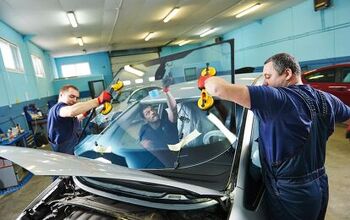








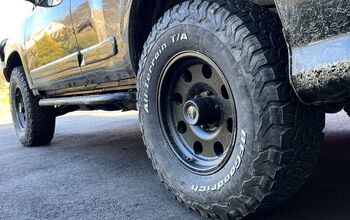

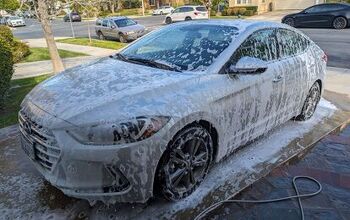

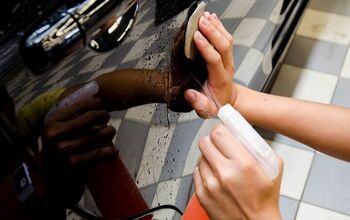
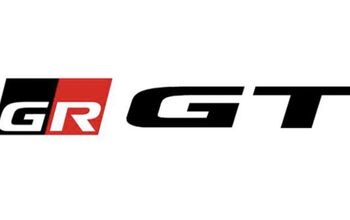

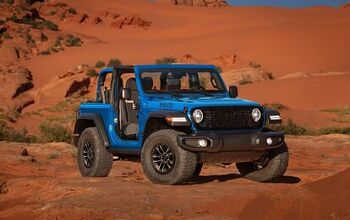

Comments
Join the conversation